With the HPE ProLiant RL300 Gen11, HPE is taking a leadership position in the enterprise server space. This is a server built on Ampere Altra and Altra Max processors, offering up to 128 Arm cores per socket. Dell does not have a competitive Arm offering. Lenovo does not sell an Ampere Altra server in the US (although Lenovo has domestic Chinese Arm offerings.) When it was launched almost a year ago we were extremely excited to hear about an Arm-based ProLiant cloud-native server. Today, we get to show you around what might be HPE’s most innovative product.
Cloud-Native Context
Cloud-native means many things to many people. In this context, let us quickly set the stage. A huge portion of VMs and containers online today are realistically using <8 vCPUs and run at well under 50% CPU utilization. A great example of this is running a web server or redis server. Usually, these applications involve open-sourced software, not tied to per-core licensing. Also, there is often a benefit in terms of latency and jitter by having dedicated cores for each instance on a server. That is really the magic of what Ampere is doing with Altra, Altra Max, and soon AmpereOne.
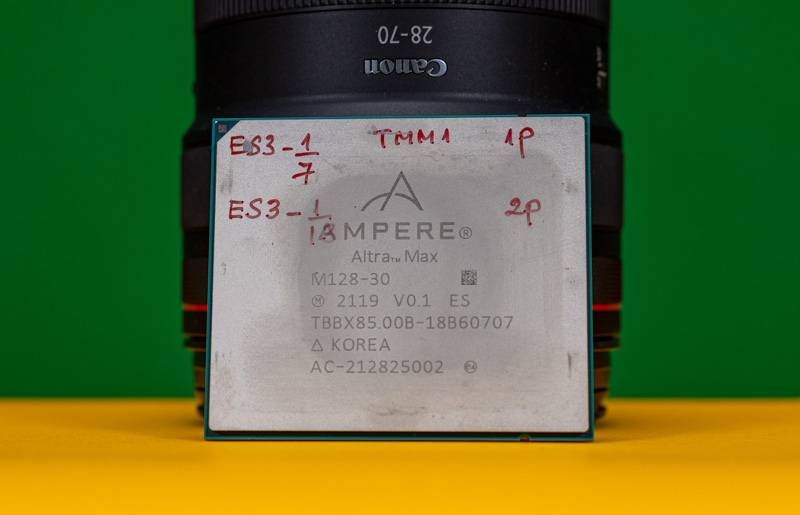
Utilizing lower-power Arm cores, Ampere Altra (up to 80 cores) and Altra Max (up to 128 cores) skip the x86 trend of offering SMT for two threads per core and instead offer a sea of smaller cores. The benefits are simple. Altra is a lower-cost processor per vCPU (core) than its x86 competition. When you do not need the performance offered to run complex simulations and have simply modest needs, the Ampere Altra lines can be significantly more cost-effective. Ampere also has another advantage. Since it is an Arm processor, one can develop and run applications in the data center on the same Arm architecture as found in edge devices.
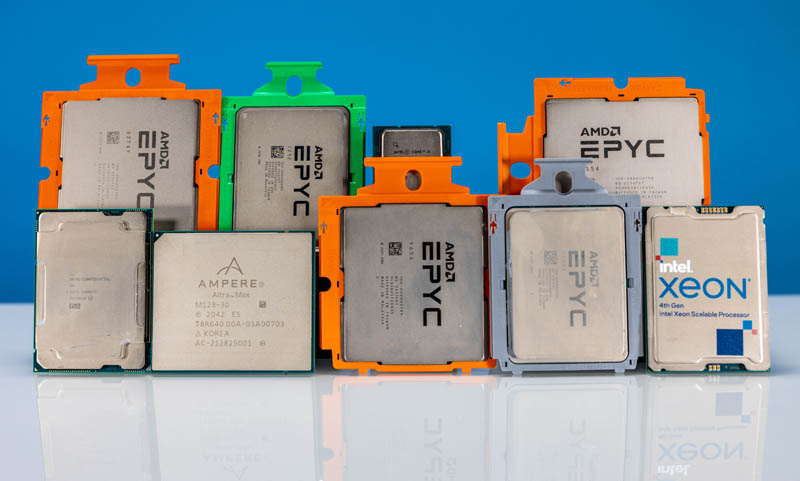
Given how specialized high-end x86 processors have become which, confusingly, means they have many domain-specific acceleration technologies, the economics now work in favor of cloud-native processors. Ampere Altra was perhaps the first in this class. AMD just launched Bergamo. Intel will have an offering, Sierra Forest, in 2024. This segment is being driven by hyper-scale customers and so it is going to be a big shift in the computing paradigm in the next 5 years. Whether it is 25% or 75% of the data center chips shipped remains to be seen, but the shift to cloud-native is coming. HPE is just ahead of Dell and Lenovo in this space with the RL300 Gen11.
With that, let us get to the hardware.
HPE ProLiant RL300 Gen11 External Hardware Overview
The HPE ProLiant RL300 Gen11 is a 1U server that looks the part of a ProLiant.
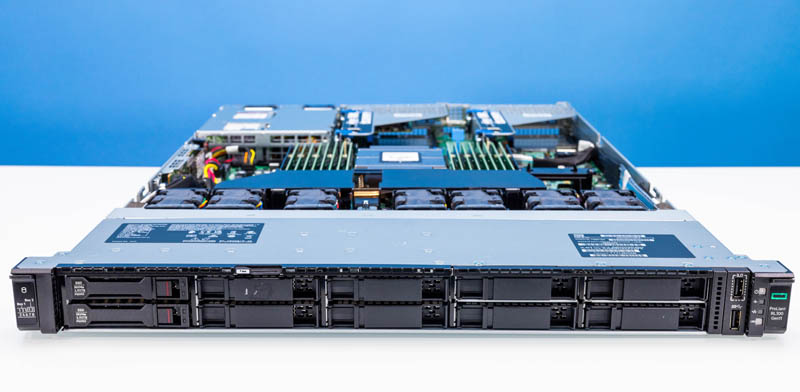
On the right side, there is the power button, status LEDs, an iLO USB port, and another USB 3 port.
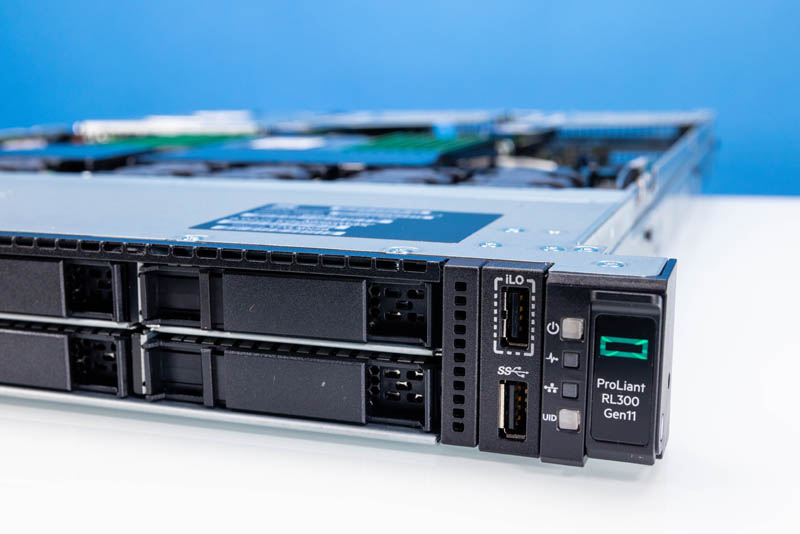
Our system has ten total 2.5″ bays on the front, but only two are populated with NVMe SSDs. Ampere Altra features PCIe Gen4 and eight-channel DDR4 memory, in line with the AMD EPYC 7003 “Milan” generation.
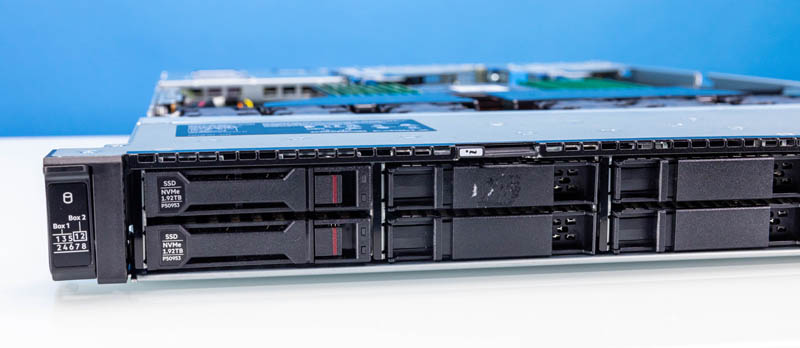
One thing that we were frankly shocked about was the drive tray situation. We had an 11-node ProLiant Gen10 cluster in our old Sunnyvale colocation lab where only 3 of the 11 machines made it to 3 years without a failure, and those failures were usually somewhere on the storage chain (SmartArray or SSD.) In this Gen11 system, the 2.5″ NVMe SSDs had screws for each drive. We review dozens of servers a year, and it is rare that we find servers with screws being used for 2.5″ drive trays, and has been rare for several years now.
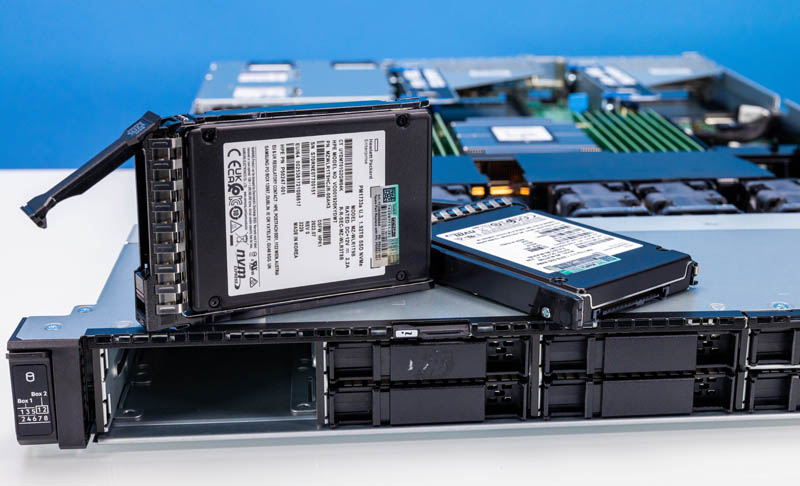
The rear of the system has a number of very nice features.
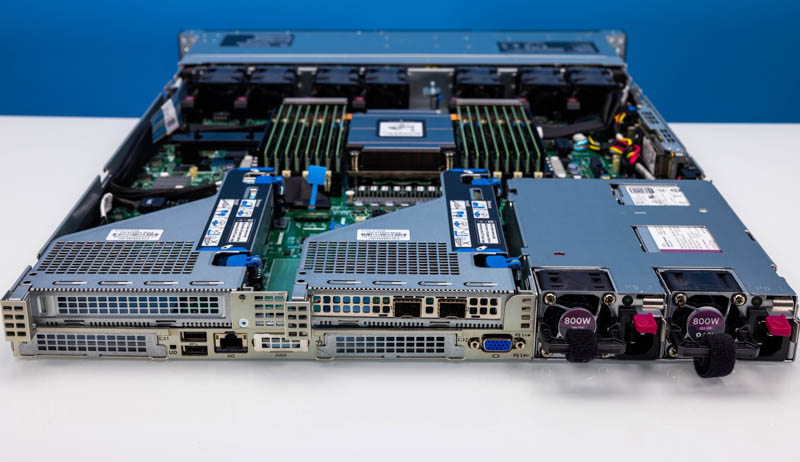
On the left rear, we get two expansion slots. One is a full-height PCIe riser slot, the other is an OCP NIC 3.0 slot.
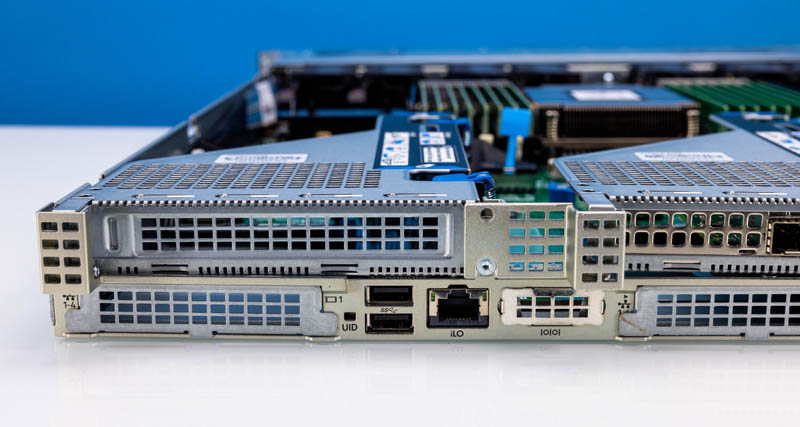
In the center, we get two USB ports and an iLO port. The VGA port is present, but it is on the other side of the second OCP NIC 3.0 slot. There is also s second riser where we have our 25GbE networking built-in.
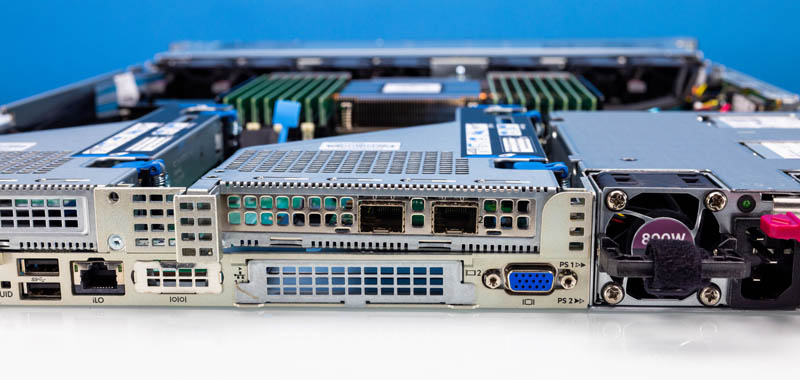
Here is a view of the NIC in the riser:
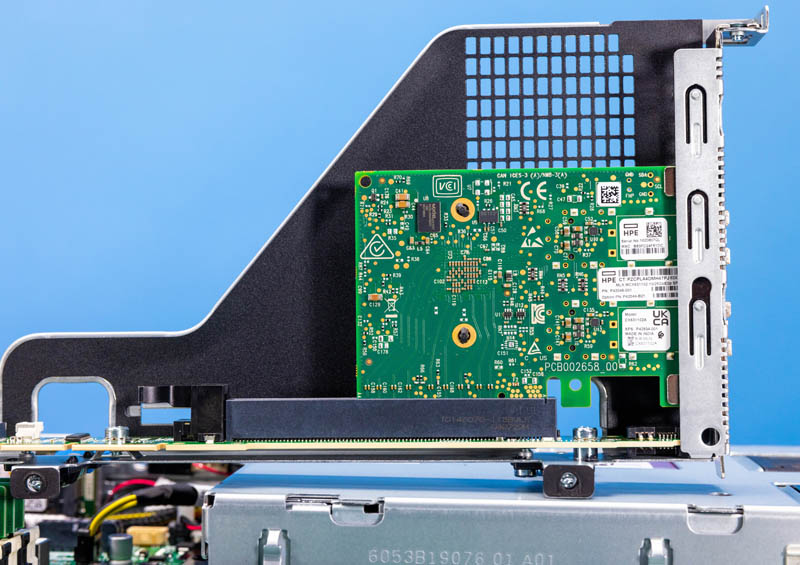
Here are both risers in the system.
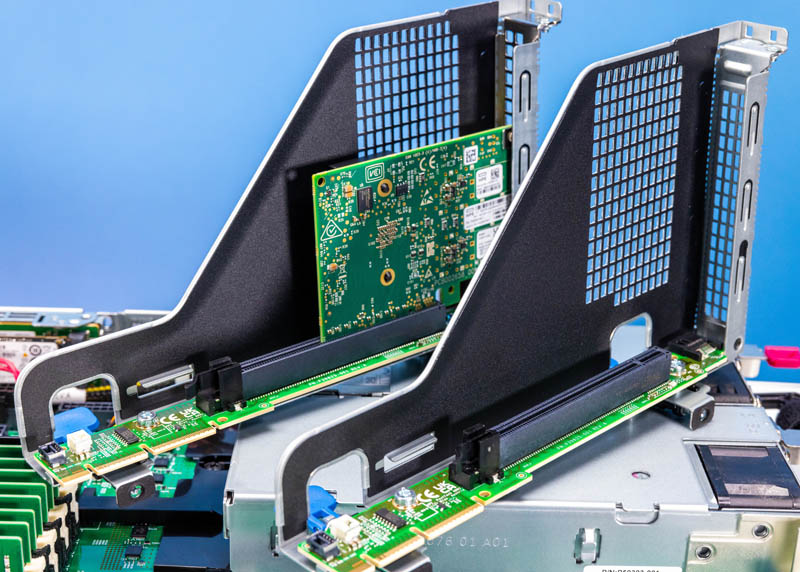
On the right side, we get redundant 800W 80Plus Titanium power supplies. For a server like this, 800W is going to be more than ample. It is nice that HPE is using high-efficiency power supplies in this server, but these are common power supplies among its ProLiant line.
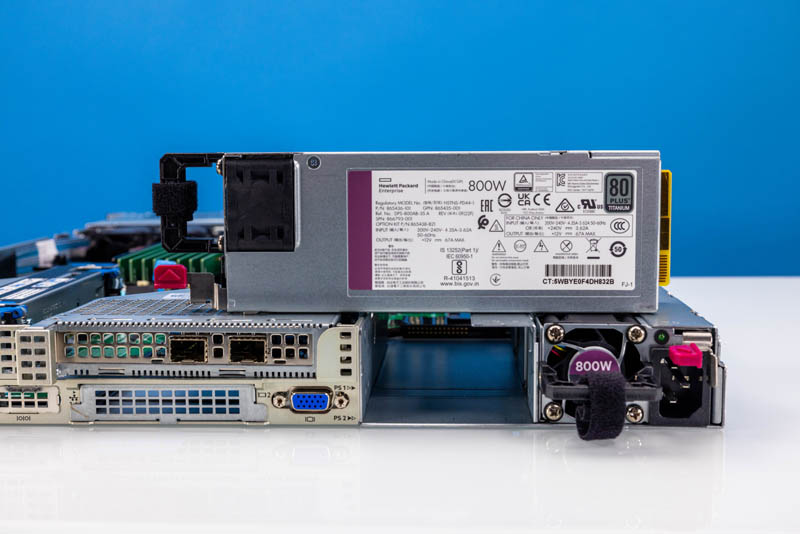
Next, let us get inside the system to see how this is similar to other ProLiant servers while offering something different.

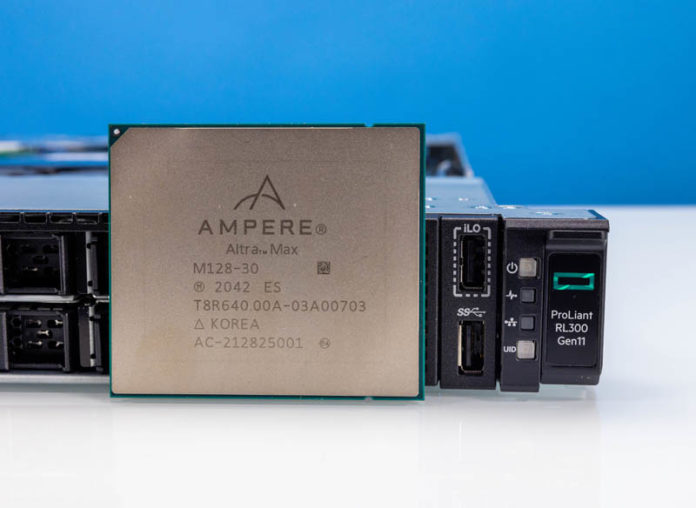



Nice review
“Having a major US server vendor sell Ampere Altra-based servers is great and it shows a willingness to listen to its customers”
Do enterprise customers really want ARM chips. They are usually more conservative than hyperscale customers and cost benefits have to be bigger to make them choose ARM servers.
That’s a great review. I’ll share it with our team. We aren’t a huge customer $20-30m in annual spend, but we’ll at least look at these for a small cluster this year to try.
It’s funny. Dell tried coming into our account with IDC and some white paper recycling bin collateral. They still haven’t had the ah ha that we read STH but we don’t look at that garbs.
2 things I found kind of confusing.
1) What do Storage Subsys failures have to do with Screws?
HPE replacement drives already come with caddies, so you aren’t swapping bare drives in/out of the caddy anyway, so why does a screw-based design matter?
2) You mentioned the Dell XE9680, did they not have such a machine before?
HPE has had the Apollo 6000/6500 and now the Crazy XD600 all with this same 2P/8SXM design.
Grrrr Spell Check – CRAY XD600
No mention if this meets HP certified supply chain requirements.
If not, this server will never see the inside of any datacenter where security is paramount.
The last time when one of the ARM vendors were bragging about how prevalent they were with some cloud operators, we checked and how were they used? As batch processing and storage managers. Any compute?
“No, we don’t use them for that internally, only if a client demands it…so we put a few on the wire to let people give them a run”.
What a farce.
Can’t find an actual listing with price. Maybe it is vaporware?
Could really use direct shopping link.
How about a HP Microserver version of this with the Ampere Altra 32 or 64 core CPU?